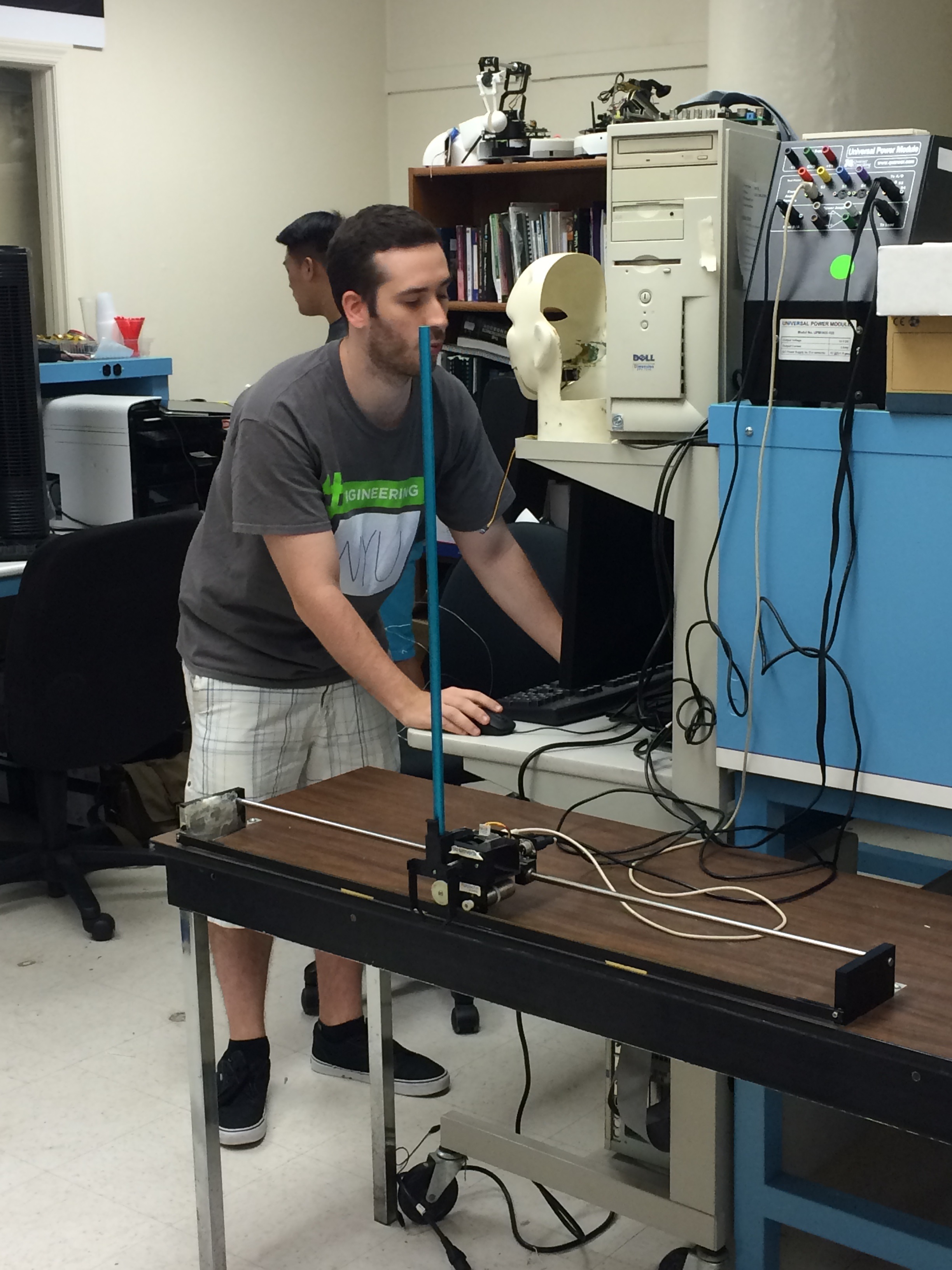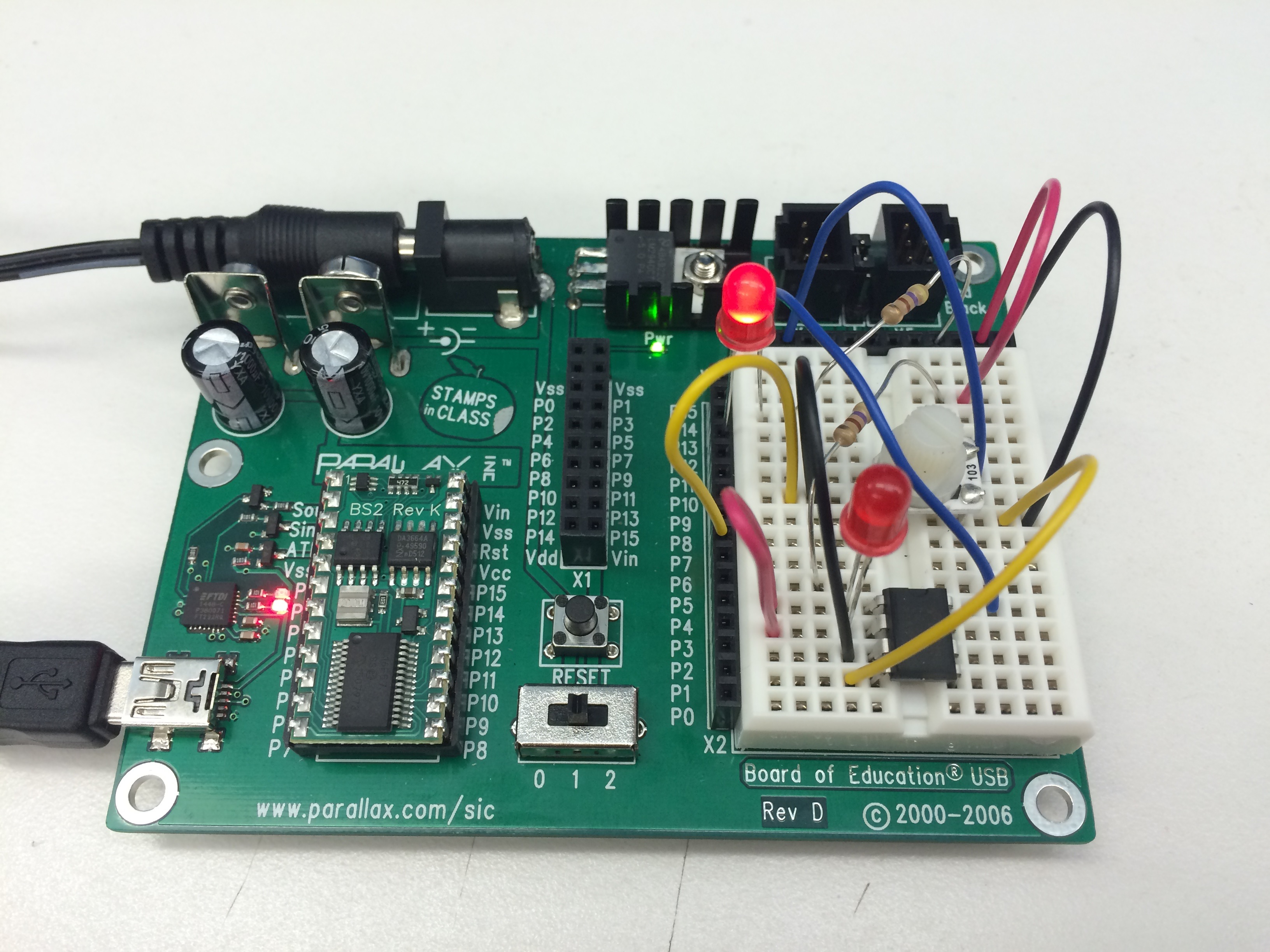July 10, 2015, Day 5:
Marc Frank and Ramona Fittipaldi
The fifth day began with a group lecture introducing the “analog-to-digital converter” (ADC). We learned that ADCs have the ability to take analog voltage input and output digital representation useful for Basic Stamp. The ADC performs a three-step procedure that includes sampling voltage, quantization of this voltage, and digital coding. The pins on the ADC include ground, power, chip select, input, offset, span, clock, and digital output. The hands-on activity for the morning explored Chapter 7, Measuring Lights from “What’s a Microcontroller”. We practiced using capacitors, LED, and phototransistors in the circuits. The use of RCTime function and corresponding hardware allowed an alternative approach to measuring analog variations in environmental signals. Jared demonstrated the inverted pendulum, which is seen in the picture to the right.
After lunch, Jared lectured on thermal sensors, both digital and analog. In addition, the lecture included op-amps, which is a low-cost and versatile IC consisting of many internal transistors, resistors, and other components. After the lecture, we continued to do hands-on work in the lab on the concepts from the morning session. We worked on activities from Chapter 1 (Analog Voltage and Binary States) and Chapter 3 (Basic Analog to Digital Conversion) from “Basic Analog and Digital”, seen in the picture to the right. Afterwards, Mike (an alumni from NYU’s RET Site SMARTER) stopped by and gave us advice on the presentation, poster, academic paper, engineering lesson (spend time on), and the “innovation challenge”.

